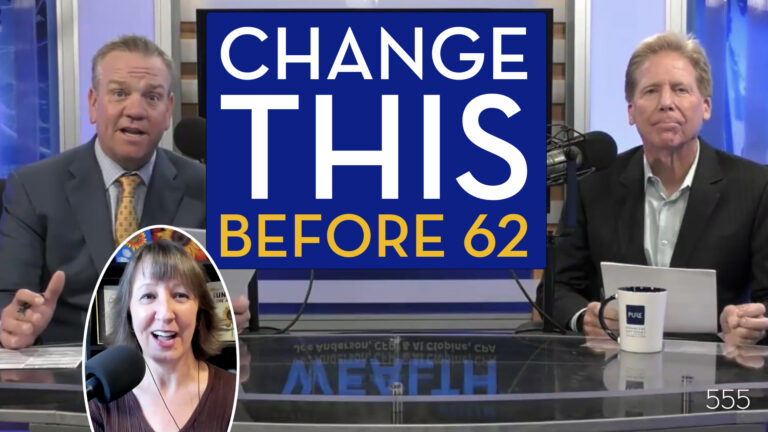Joe Anderson, CFP® and Alan Clopine, CPA discuss why the father of the 401(k) regrets creating it. Plus, the worst mistakes you can make with your IRA and 401(k). Original publish date January 14, 2017 (hour 1). Note that content may be outdated as rules and regulations have changed.
1:46 “[For today’s topics,] I’ve got ten important considerations for 401(k) rollovers, and Ed Slott’s three fatal IRA (individual retirement account) errors.”
2:59 “Ted Benna, in case you don’t know, is known as the father of the 401(k) and we was a benefits consultant with Johnson companies, and he was among one of the first to come up with the notion that American workers should set aside their own pay pre-tax for retirement.”
4:02 “He and other early proponents dislike what the 401(k) has spawned. The tool was never meant to serve as the main means by which workers save for retirement, but that’s precisely what it’s become – it’s increasing the financial risk for workers along the way.”
8:25 “The other thing he doesn’t like about the 401(k) is he says ‘I helped open the door for Wall Street to make even more money than they were already making. That is the one thing I do regret.’”
11:36 “A majority of retirees rolled over their 401(k) to an IRA at retirement.”
14:29 “Let’s say you go back to an old company, you could roll all of your 401(k) into that new 401(k), that avoids the required distribution until you’re retired.”
20:03 “When you think of an appropriate globally-diversified portfolio with a rebalancing strategy, a rebalancing strategy simply means that whatever asset class you have that’s done really well – you shave some of those profits off…and buy an asset class that hasn’t done as well – you’re constantly selling higher and buying lower by discipline…you take the emotion out of it.”
22:57 “The true value-add of an advisor is to take a look at what the strategy is, what their plan is and coming up with the tax alpha if you will, because if you can reduce the overall tax liability of the income that you’re trying to produce, that’s more money – it’s a rate of return. If you look at rebalancing when markets go up and down or sideways to keep that risk parameter based on your goals – that’s huge.”
29:24 “Here’s another one (mistake) that’s irreversible. This is when you have a non-spouse rollover…let’s say you inherit an IRA from your father or mother and you roll it over into your own IRA…you may not realize this but it’s a prohibited transaction. That’s treated as a full distribution.”
Listen to the YMYW podcast:

Amazon Music
AntennaPod
Anytime Player
Apple Podcasts
Audible
Castbox
Castro
Curiocaster
Fountain
Goodpods
iHeartRadio
iVoox
Luminary
Overcast
Player FM
Pocket Casts
Podbean
Podcast Addict
Podcast Index
Podcast Guru
Podcast Republic
Podchaser
Podfriend
PodHero
podStation
Podverse
Podvine
Radio Public
Rephonic
Sonnet
Spotify
Subscribe on Android
Subscribe by Email
RSS feed

YouTube Music
IMPORTANT DISCLOSURES:
Pure Financial Advisors is a registered investment advisor. This show does not intend to provide personalized investment advice through this broadcast and does not represent that the securities or services discussed are suitable for any investor. Investors are advised not to rely on any information contained in the broadcast in the process of making a full and informed investment decision.
• Investment Advisory and Financial Planning Services are offered through Pure Financial Advisors, LLC, a Registered Investment Advisor.
• Pure Financial Advisors LLC does not offer tax or legal advice. Consult with your tax advisor or attorney regarding specific situations.
• Opinions expressed are not intended as investment advice or to predict future performance.
• Past performance does not guarantee future results.
• Investing involves risk including the potential loss of principal. No investment strategy can guarantee a profit or protect against loss in periods of declining values.
• All information is believed to be from reliable sources; however, we make no representation as to its completeness or accuracy. As rules and regulations change, content may become outdated.
• Intended for educational purposes only and are not intended as individualized advice or a guarantee that you will achieve a desired result. Before implementing any strategies discussed you should consult your tax and financial advisors.
CFP® – The CERTIFIED FINANCIAL PLANNER™ certification is by the Certified Financial Planner Board of Standards, Inc. To attain the right to use the CFP® designation, an individual must satisfactorily fulfill education, experience and ethics requirements as well as pass a comprehensive exam. Thirty hours of continuing education is required every two years to maintain the designation.
AIF® – Accredited Investment Fiduciary designation is administered by the Center for Fiduciary Studies fi360. To receive the AIF Designation, an individual must meet prerequisite criteria, complete a training program, and pass a comprehensive examination. Six hours of continuing education is required annually to maintain the designation.
CPA – Certified Public Accountant is a license set by the American Institute of Certified Public Accountants and administered by the National Association of State Boards of Accountancy. Eligibility to sit for the Uniform CPA Exam is determined by individual State Boards of Accountancy. Typically, the requirement is a U.S. bachelor’s degree which includes a minimum number of qualifying credit hours in accounting and business administration with an additional one-year study. All CPA candidates must pass the Uniform CPA Examination to qualify for a CPA certificate and license (i.e., permit to practice) to practice public accounting. CPAs are required to take continuing education courses to renew their license, and most states require CPAs to complete an ethics course during every renewal period.









